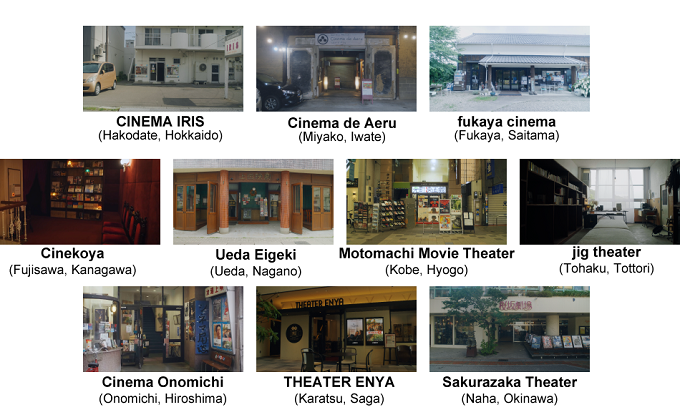Movie Theaters around the World <4>
Japan Mini-Theater Report
March 4, 2024
[Special Feature 079]
Special Feature: Movie Theaters around the World (See here for an overview of this special feature)
Genda Yuta
(Film and Broadcast Media Department, The Japan Foundation)
1.Mini-Theaters Supporting Movie Culture in Japan
According to the the Eiga Joei Katsudo Nenkan 2022 (Almanac of Film Screenings 2022)*¹, "mini-theaters" refer to small cinemas or movie theaters conducting independent business not under the direct influence of major movie production and/or distribution companies and running programs mainly featuring "independent" or "art" films released in one or several theaters, as well as revival houses called "Meiga-za" that run programs featuring older films or new films which have finished showing at first-run movie houses. In 2022, the number of movie theaters in Japan was 590, including 359 cinema complexes (theaters where a single operations organization runs multiple screens (5 or more in principle) at the same location sharing a name, entrances and exits, ticket counters, lobbies, concession counters, screening rooms, etc.), 66 already-existing movie theaters (conventional movie theaters operated by local entertainment companies), and 136 mini theaters and revival houses. In other words, mini-theaters and revival houses account for about 20% of all movie theaters. On the other hand, of the 538 films released in movie theaters in the same year, 314 films (more than 60%) were small-scale releases at 49 theaters or less, and almost all of them were shown only in mini-theaters. In this manner, mini-theaters play an important role in supporting Japanese film culture.
- *¹ Almanac of Film Screening 2022, edited by the Japan Community Cinema Center
http://jc3.jp/wp/research-reports/
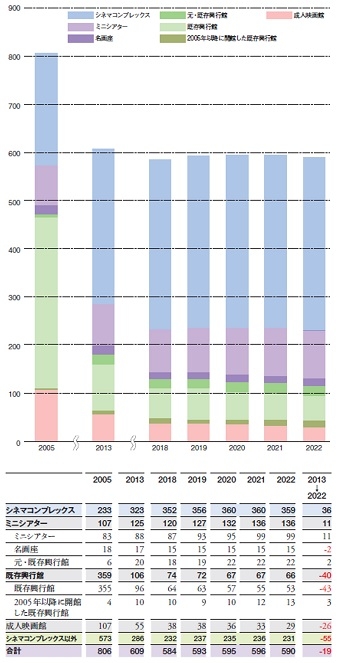 Transition in numbers of cinemas
Transition in numbers of cinemas2.JFF+ INDEPENDENT CINEMA and MINI THEATER JOURNEY
With this background in mind, the Japan Foundation (JF) has launched an online streaming event called "JFF+ INDEPENDENT CINEMA," which focuses on the mini-theaters that support diversity in Japanese movie culture and add color to local culture. The first event held from December 15, 2022 to June 15, 2023 featured 12 Japanese movies and six mini-theaters for overseas viewers, and received a great response.
The second event, "JFF+ INDEPENDENT CINEMA 2023", is being held from August 1, 2023 to October 31. It streams 12 Japanese movies recommended by mini-theaters from all over Japan and internationally active movie critics and film festival directors, as well as the "MINI THEATER JOURNEY"
series of videos that introduce 10 mini-theaters to the world, at no charge. MINI THEATER JOURNEY started from this second event, and focuses on participants' thoughts about mini-theaters, while introducing the local areas where they are located, in videos with English subtitles. In order to foster familiarity with mini-theaters in people all over the world in line with the Japan Foundation's mission of "Cultivating friendship and ties between Japan and the world," I aimed to convey the "character" of the mini-theaters, and produced the series so that people would be able to feel the connection between mini-theaters and participants, as well as between mini-theaters and their local areas.
Through the filming of "MINI THEATER JOURNEY," the differences between the 10 theaters and their relationships with their local communities became clearer. The current location of a region and society may be revealed through mini-theaters, which are also important carriers of local culture. Giving such an impression, mini-theaters are becoming entities that express the cultural diversity of various parts of Japan.
This article is a sort of "supplementary audio commentary" on the introduced videos on the production of MINI THEATER JOURNEY. I hope it helps you better feel the relationships and differences among the theaters, and their diverse appeal overall.
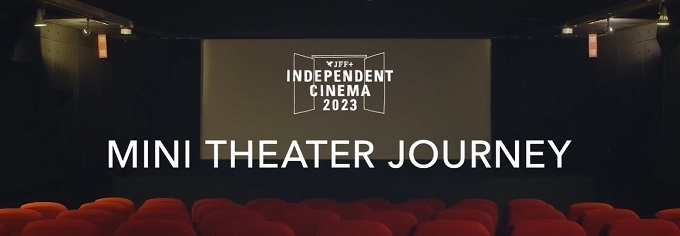 MINI THEATER JOURNEY series of videos introducing mini-theaters
MINI THEATER JOURNEY series of videos introducing mini-theaters3. 10 Mini-theaters from Hokkaido to Okinawa
First, I would like to introduce the mini-theaters I filmed this time. From north to south: CINEMA IRIS (Hakodate-shi, Hokkaido), Cinema de Aeru (Miyako-shi, Iwate), Fukaya Cinema (Fukaya-shi, Saitama), Cinekoya (Fujisawa-shi, Kanagawa), Ueda Eigeki (Ueda-shi, Nagano), Motomachi Movie Theater (Kobe-shi, Hyogo), jig theater (Tohaku-gun, Tottori), Cinema Onomichi (Onomichi-shi, Hiroshima), THEATER ENYA (Karatsu-shi, Saga), and Sakurazaka Theater (Naha-shi, Okinawa). I received cooperation from literally all over Japan, from Hokkaido in the north to Okinawa in the south, to create this series on mini-theaters that are full of regional character and charm.
In the first place, film culture and the region have an inseparable relationship. According to the monument of town opening (established by the Saien Town Association on November 3, 1941), in the area near Morioka Castle in Morioka-shi, Iwate Prefecture, Nambu Tochi Co. Ltd. was established to carry out regional development. It started work in 1928, and one of the initiatives included a project "to build a movie theater and contribute to the improvement of popular culture." After the war, in the urban planning of Shinjuku in Tokyo, urban planner Ishikawa Hideaki proposed a plan to surround a plaza with entertainment facilities including Kabuki theaters and movie theaters, and that became the area known today as Kabukicho. In Okinawa Prefecture, there were as many as 120 movie theaters in the 1960s, and as a result, the main street of Naha-shi was named "Kokusai Dori" after the movie theater "Ernie Pyle International Theater." There are also several other street names derived from movie theaters, such as Sakurazaka-dori (the current street where Sakurazaka Theater is located), Heiwa-dori, Okiei-dori, and Orion-dori. They demonstrate the strong connection between movie theaters and the area. These places for showing movies were essential to the formation and reconstruction of their towns.
Movie production sites also influenced regional formation. In 1932, P.C.L. Film Productions (currently Toho Studios) built a large stage for shooting at Seijogakuenmae, a quiet residential area in the suburbs of Tokyo, which started to be subdivided for sale in 1924. The Godzilla series was later filmed there, and movie directors and actors living in the neighborhood greatly contributed to the formation of local culture. Similarly, Shinko Kinema Oizumi Studio (currently Toei Tokyo Studio) was established in Oizumi-gakuen, a suburban residential area, in 1934, and Shochiku Studio (closed in 2000) was established in Ofuna in 1936. There are multiple cases in which film studios influenced the regional formation before the war. In this way, there was a good compatibility between Japanese film culture and cities.
Japanese mini-theaters traced a path through history: the 1960s marked their origins, the 1970s was a social movement, the 1980s a time when the emphasis shifted to "entertainment" and many mini-theaters opened, and the 1990s was the period of maturity.*² In fact, in 2000, there were 1,401 movie theaters other than cinema complexes, including mini-theaters, but in 2022, the number decreased to 428, less than one-third. In this way, mini-theaters have been greatly influenced by social changes since the 1990s, and have come to move hand in hand with regional issues.
Of the 10 theaters featured this time, there is a difference of about 30 years between the earliest-established, CINEMA IRIS (1996), and the newest, jig theater (2021), but they all have one thing in common: they were established in an era when mini-theaters were on the decline. Cinema complexes rapidly increased in response to the peak of the growth in the Japanese population in 2008. Mini-theaters, which are not aimed at the masses, had to reconsider their positions in their local regions. The 2000s saw the establishment of Fukaya Cinema (2002), Sakurazaka Theater (2005), and Cinema Onomochi (2008); and in the 2010s, Motomachi Movie Theater (2010), Cinema de Aeru (2016), Cinekoya (2017), Ueda Eigeki (2017), and THEATER ENYA (2019) were established. What do their establishment and operation show us?
- *² From 'Mini' to the World ― the History of Japanese Mini-Theater Culture written by Tsuchida Tamaki and edited by the JF
https://jff.jpf.go.jp/ja/read/column/minitheater/
4. Bringing Mini-Theaters Back to Towns
Why did they establish a mini-theater in the first place when mini-theaters were disappearing? I would like to unravel from there. First of all, the most frequently heard reason is that mini-theaters disappeared from towns. Cinema de Aeru was established because the only movie theater in the town, Miyako Cinemarine, closed in September 2016. The manager of Cinekoya decided to establish a movie theater out of a sense of loss and loneliness at the disappearance of a movie theater when "Fujisawa Odeon," a historic movie theater closed in 2007 in the manager's hometown of Fujisawa. Cinema Onomichi was established because the last movie theater in Onomichi, "Onomichi Shochiku," closed in 2001, and it was thought sad that there were no movie theaters in the movie town of Onomichi. THEATER ENYA was established because all movie theaters disappeared from the city in 1997, but a survey of visitors to the shopping district in 2010 showed that "many residents expressed a desire to see movies in their town again." Sakurazaka Theater was opened due to a rise in citizens calling for a cinema to be retained after the company running the last local cinema in Naha, "Sakurazaka Cinecon Ryuei," withdrew from the movie business and closed its doors. They wanted to do something about the situation of mini-theaters on the verge of closing due to social factors such as the emergence of suburban cinema complexes, population decline, and the diversification of young culture. They daringly decided to stand up and establish a new mini-theater in this era of adversity for mini-theaters.
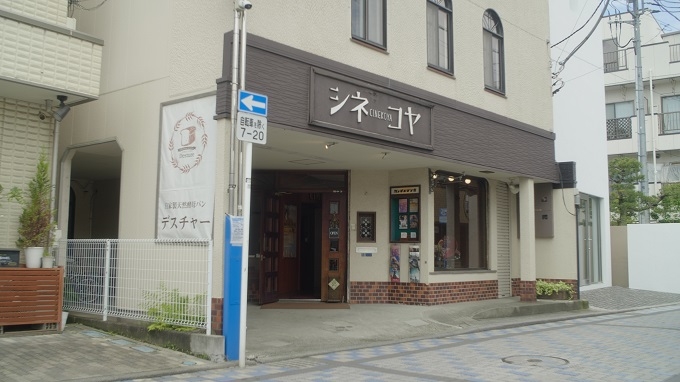 Cinekoya was also created because cinemas had disappeared from the city.
Cinekoya was also created because cinemas had disappeared from the city.5.Nurturing New Community
When someone starts a mini-theater, they have to think about how to create an audience (whether to carry over the audience from previous mini-theaters or to create a new audience). Many of these mini-theaters were started after holding independent screenings (including CINEMA IRIS, Fukaya Cinema, Cinekoya, Cinema Onomichi, and THEATER ENYA). Many of them opened long after movie theaters had disappeared from their areas, and it seems that they tried to solve the challenge of creating an audience through screenings.
In the case of THEATER ENYA, the entire region was involved in the production of the movie Hanagatami before the theater was opened, and this was one factor that connected local residents with movie culture. Cinema de Aeru inherited the regional movie culture fostered by the screenings of the previous movie theater called "Miyako Cinemarine," along with the Miyako Movie Co-op which is an operating organization of the facilities, and then has been renting the facilities for several days each month after the movie theater closed. Sakurazaka Theater inherited the entertainment culture of Sakurazaka Cinecon Ryuei, and soon developed a new customer base by opening the "Sangoza Kitchen" cafe, "Fukurasha" shop, and the workshop school "Sakurazaka Citizen University." If you look further into these efforts, you will see that they are community-minded. Cinema de Aeru is operated not only by citizens, but also by other volunteers from around Iwate Prefecture, neighboring prefectures, and even Tokyo metropolitan area, who sympathize with the purpose. Motomachi Movie Theater was opened by a group of movie-loving volunteers who sympathized with founder and owner, Hori Tadashi's passion for movie theaters, and they have a strong sense of creating and connecting movie theaters together. This can be described as community formation on the administration side.
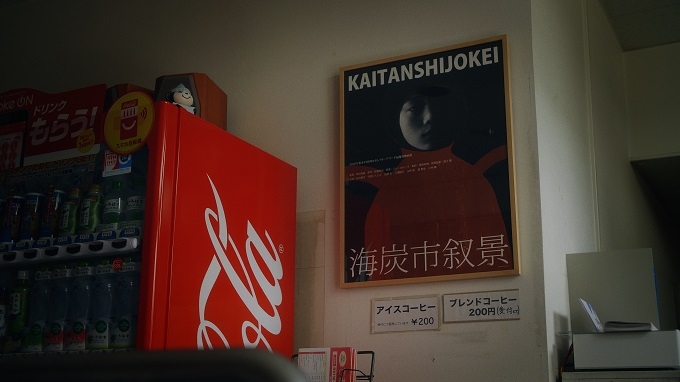 The poster for the movie Sketches of Kaitan City which has a deep connection is still hung at CINEMA IRIS.
The poster for the movie Sketches of Kaitan City which has a deep connection is still hung at CINEMA IRIS.
By contrast, there was also a formation of a community that supported movie theaters. CINEMA IRIS was founded in 1996 with the independent screening group "Iris Inn" as its parent organization, and was created through donations of over 7 million yen from approximately 47 citizens. THEATER ENYA revived enthusiasm for movie theaters in 2019, building on the regular screenings steadily held by the "Karatsu Cinema Society," which was founded by the town development company Ikiikikaratsu based on the survey. By setting up and operating a mini-theater through a town development company, they have fostered a new community on both the management side and the local side, and by collaborating and integrating with the existing community, they have added color to the local culture. This shows that modern mini-theaters themselves are not just places that provide movies, but places where people are involved and bring about new bonds in the local community.
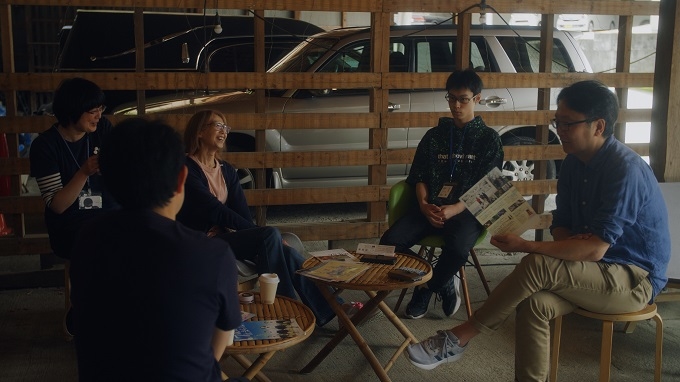 At Cinema de Aeru, members take turns selecting the movies to be shown.
At Cinema de Aeru, members take turns selecting the movies to be shown.
6.Subjective Thoughts and Objective Viewpoints
New mini-theaters were opened in this vein, but I noticed that many of the people involved have no previous connection to the area, or have returned from outside the area. Takeishi Kenji of Fukaya Cinema decided to start a movie theater in his wife's hometown of Fukaya, Kawamoto Seijun of Cinema Onomichi spent time in Kyoto as a student, and Shimoji Kumiko of Sakurazaka Theater worked outside of her prefecture after graduating from university. Others such as Arisaka Tamio and Kushigeta Kazunori of Cinema de Aeru, Shibata Shuhei and Miyake Yuko of jig theater, and Kaida Haruko and Kawaguchi Yuiko of THEATER ENYA did not continue to live in their hometowns, either. They went out, noticed the good things about their local areas, were worried about the current situation, and were drawn to the good points of their areas more from an outsider's perspective, so they moved back into the area. Perhaps mini-theaters are facilities that are receptive to other viewpoints because they handle movies, which are content to introduce different cultures. I think the place of mini-theaters as a space that fosters communication with the local community can be seen from the way it gets people involved.
In this way, attachment to the area and an objective perspective towards the area seem to be factors that lead to the opening of mini-theaters in times of adversity. Is it possible to run a new mini-theater in an area where mini-theaters have disappeared because they became economically infeasible? And if so, how was it made possible?
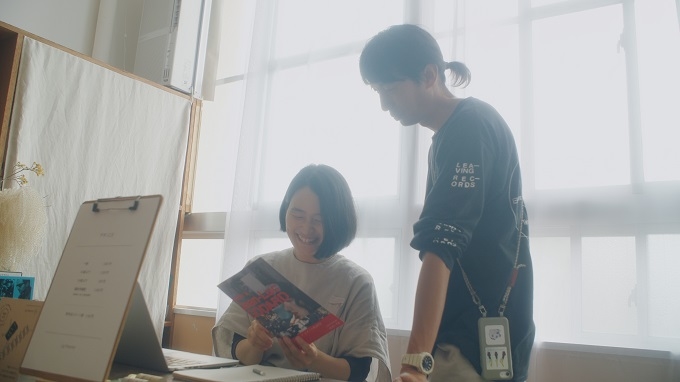 jig theater discovers and weaves together regional charm with those who share their thoughts.
jig theater discovers and weaves together regional charm with those who share their thoughts.
7.Being Selective about "Not Being Selective" about Movies
I gained another clue when I visited the first cinema, which was Sakurazaka Theater in Okinawa. What impressed me about manager Shimoji Kumiko was that she is not selective about movies and not selective about running the movie theater. Sakurazaka Theater strives to provide movies in a wide range of genres by showing movies that many people want to see, without choosing to show movies that match the taste of the theater itself. According to director Nakae Yuji, it is not a movie theater but a theater. Rather than someone doing a continuation of the movie theater, he is particular about making it an open place where people can come and enjoy entertainment, and he is conscious to offer diversity over consistency. In fact, there is Fukurasha, which sells books, goods, and Okinawan ceramics, Sakurazaka Citizen University, which holds more than 100 workshops, and Sangoza Kitchen, where people can enjoy coffee, beer, and meals. Ms. Shimoji said that the part of her job at Sakurazaka Theater that requires the most discerning eye is the purchase of ceramics.
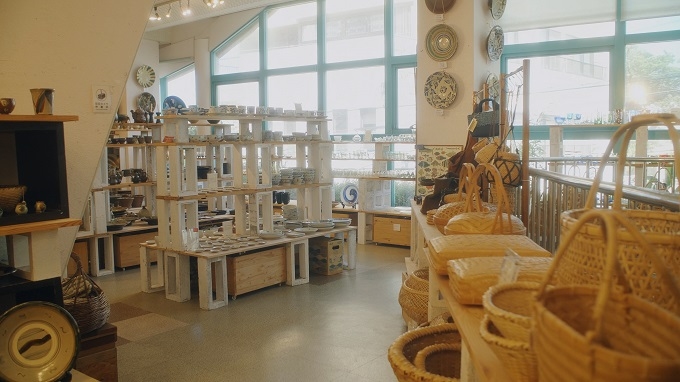 The "Fukurasha" store inside Sakurazaka Theater on the second floor. It sells a wide range of beautiful porcelain and miscellaneous goods from Okinawa and other places.
The "Fukurasha" store inside Sakurazaka Theater on the second floor. It sells a wide range of beautiful porcelain and miscellaneous goods from Okinawa and other places.
Many other mini-theaters faced similar situations and decided to operate their own mini-theaters using their own solutions. Cinema de Aeru has a management style that distributes the risk by holding screenings once a month rather than in a permanent theater, and by running the show through the community. Recognizing that movie theaters alone cannot survive, Cinekoya has combined a bakery and café to create a space where people who are not interested in movies can visit too. THEATER ENYA is a newly built complex with a strong focus on community development, and was established along with a hotel, café, antenna shop, and shared offices. With a flexible mindset, they are changing the format from a mini-theater that is a place to screen movies, to a mini-theater that is "also" a place to screen movies, thus allowing mini-theaters to be operated in a reasonable manner. By skillfully incorporating local and community needs, the mini-theater presents the possibility of becoming a new common area for the region and community.
What I realized once again is the very fact that a movie theater disappeared became an opportunity to create a new movie theater. Normally, in creating a town's culture, discussions are based on the idea of nurturing the leaders and passing on the culture. However, what is common to many of the mini-theaters that we have featured in this article is that rather than supporting the previous operating organization or using the existing space as is, a new community framework has been revived and the characteristics of the locale have been updated. Mini-theaters which were created when other mini-theaters disappeared from towns, are conscious of how to form communities and connect with local areas, and it can be said that local activities are becoming an essential aspect of their operations.
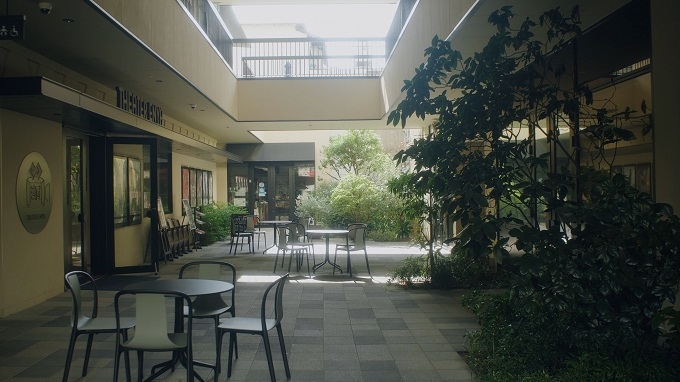 The first floor of "Karae" at THEATER ENYA. It functions as part of the town.
The first floor of "Karae" at THEATER ENYA. It functions as part of the town.
8.Inheriting Spaces and Creating New Town Scenery
The architecture of these revived mini-theaters is all very impressive. One of these buildings is THEATER ENYA, which is located in a complex built on the site of a former brewery. Examples of theaters that renovated the sites of previous cinemas are Ueda Eigeki, Cinema Onomichi, and Sakurazaka Theater. Examples of renovations include CINEMA IRIS, located at the site of a former supermarket on the first floor of an apartment building, Cinema de Aeru, a former brewery from the Edo period registered as a tangible cultural asset, Fukaya Cinema, also a former brewery from the Edo period, Cinekoya, a former photo studio, Motomachi Movie Theater was a former store, and jig theater was a former elementary school. One characteristic of mini-theaters is that they can utilize the spatial resources of a town, such as locations and buildings, to enhance their local charm.
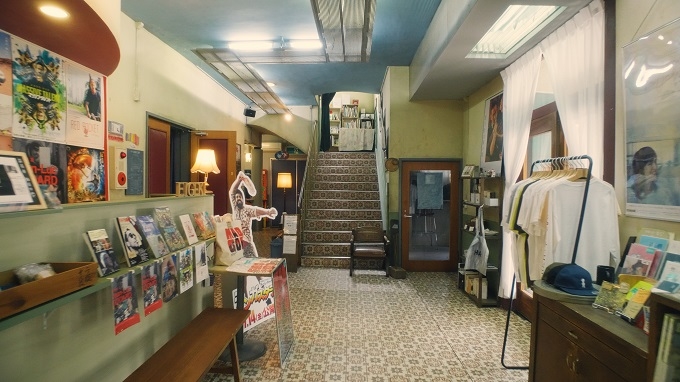 The entrance of Ueda Eigeki. It draws inspiration from Sakurazaka Theater.
The entrance of Ueda Eigeki. It draws inspiration from Sakurazaka Theater.
From these architectural spaces, you can discover even richer connections with the local areas. After Fukaya Cinema opened on the site of the Nanatsuume brewery, various other stores gradually started moving into the building and now there is a diverse range of businesses, such as a secondhand book store, a cafe, an izakaya, a gallery, a woodworking shop, and a video production company. It is also one of the famous spots in Fukaya, visited by tourists from both Japan and abroad. As mentioned above, Cinekoya has a large selection of books and magazines, it also even sells bread, and plans and sells food and drinks related to movies together with local stores. It has been featured in various magazines and has become a place visited not only by locals but also by tourists. THEATER ENYA operates in one corner of the "Karae," a complex equipped with the functions necessary for the region to solve regional issues, and local residents and tourists are often seen staying in the plaza inside the facility. It plays a large role, both tangibly and intangibly, as a place where a variety of people from within and outside the region visit and interact. Sakurazaka Theater was renovated to place the reception further inside from the entrance so that people not there to see movies can easily enter. Mini-theaters were traditionally located in shopping strips. These were places where people would often buy clothes and food, have tea, perhaps see a movie, and engage in multiple activities. The revived mini-theaters can be said to incorporate the elements of local shopping strips lost due to the hollowing out of the city center, and it can exist as a place and function that can provide a combination of the city's charms, while also having an affinity with tourism. In recent years, people who live in local areas and work to solve local issues and create new value are called "urbanists"*³ and I think that the people behind mini-theaters are exactly "urbanists." They may hold the key to creating an attractive town.
- *³ Urbanist by Nakajima Naoto (2021, Chikuma Shinsho)
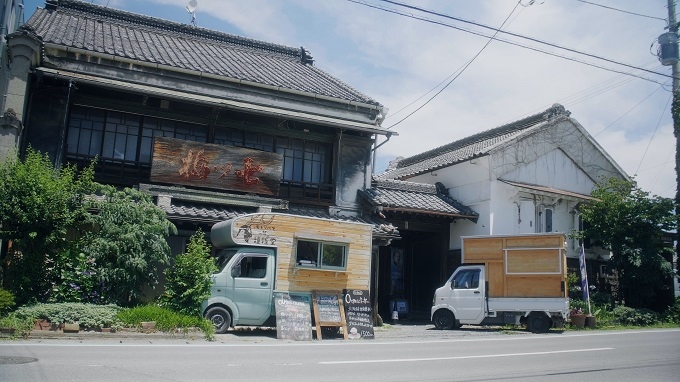 Fukaya Cinema at the site of the former Nanatsuume Brewery. Visited by tourists from around the country and abroad.
Fukaya Cinema at the site of the former Nanatsuume Brewery. Visited by tourists from around the country and abroad.9.Sharing Values across Regional and National Borders
In this way, while each mini-theater has been active in its local community from its establishment to the present, it was also possible to see horizontal connections among the mini-theaters. For example, when Cinema Onomichi was trying to revive its movie theater, it was said that a movie theater normally could not survive without a population of 300,000. Although the population of Onomichi was only 150,000, after learning that Fukaya Cinema, which opened under similar circumstances and is supported by a large audience, they decided to open a movie theater in Onomichi. Ueda Eigeki rented out space to a coffee shop and started selling movie merchandise and miscellaneous goods after learning that Fukurasha and Sangoza Kitchen are attached to Sakurazaka Theater. For mini-theater owners, the presence of their predecessors and friends gives them the courage to move forward.
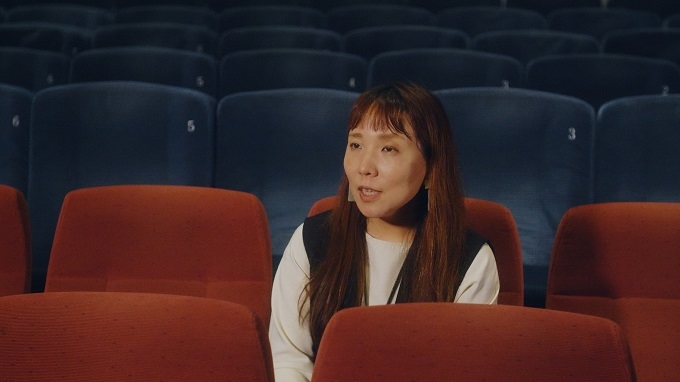 Fukaya Cinema was a model for launching Cinema Onomichi.
Fukaya Cinema was a model for launching Cinema Onomichi.
With that in mind, what kind of possibilities can the connections among mini-theaters across national borders bring? At the time of filming this video, I asked the people at the mini-theaters about the meaning and significance of showing the videos to people overseas. Hayashi Mirai of Motomachi Movie Theater said that it is important to think about not only one's own movie theater or theaters in Kobe, but also in Osaka and Kyoto, so that everyone can prosper, and that those connections expand to other areas in Kansai, Japan and the world. Takeishi Kenji of Fukaya Cinema told me about the possibilities and meaning of a network of mini-theaters through an episode in which a mini-theater from the city of Incheon in South Korea visited Fukaya Cinema and had an interaction with them. For mini-theaters, whose activities are centered on the local community, connections with overseas countries are not direct factors, but I think one good thing about mini-theaters is that they have the potential to foster ties that go beyond the framework of the region and Japan. In the past, various types of Japanese culture have received renewed attention from abroad and have been reevaluated after being appraised overseas. I sincerely hope that this work will help the value of mini-theaters in Japan be recognized and attract attention overseas, and that it will be an opportunity to further convey the appeal of mini-theaters to people in Japan.
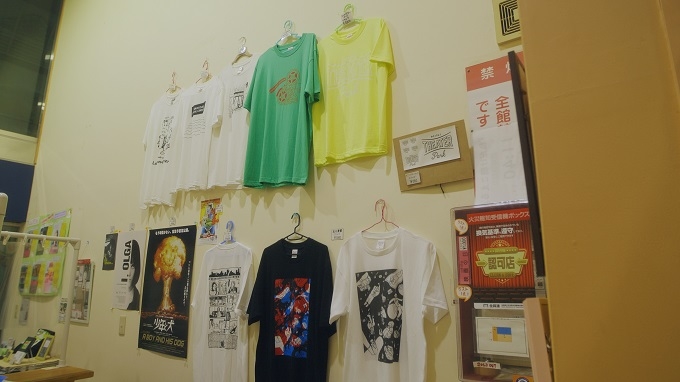 Motomachi Movie Theater also produces and sells merchandise in collaboration with other cinemas
Motomachi Movie Theater also produces and sells merchandise in collaboration with other cinemas10.Conclusion
"MINI THEATER JOURNEY" is a series of documentary videos that convey the real-to-life appeal of mini-theaters with a focus on mini-theaters that are rich in personality and the people who support them. These mini-theaters exist thanks to these people, thanks to these towns. Mini-theaters hold such a future for Japanese movies.
Through these interviews, I realized once again that Japanese mini-theaters have a strong relationship with their local area. Some mini-theaters build communities and then work on regional development through those communities. Some mini-theaters combine movies with other elements in a style that suits the local area. Some mini-theaters create new connections by linking their regions with the outside world. There is no correct answer, and there are various possibilities depending on the region and the people involved. Mini-theaters show hints that can be used not only in the film field, but also in various fields such as local culture, central shopping districts, town development, and community. As the COVID-19 pandemic has calmed down and many tourists have started returning to Japan, mini-theaters might offer visitors an opportunity to interact with local communities that is one step closer than other tourist sites, thanks to their diverse viewpoints and connections with both those inside and outside the region.
In closing, I would like to share a comment from Yamaguchi Yosuke, the illustrator who drew the main visual for "JFF+ INDEPENDENT CINEMA 2023."
When a mini-theater is opened somewhere,
it is based on the feelings of one person.
These will then spread to the people around them and spark other feelings.
It always starts with something very personal.
I tried to express this in my illustration.
Whether it is about someone with such feelings, or a scene in someone's memories.
I would like to leave this up to the viewer.
After watching the 10 videos, I hope that the main visual will link with the image of mini-theaters that you had within you, and that you will be able to develop warm bonds with each mini-theater. And I hope to keep an eye on the present and future of movie culture and regional culture.
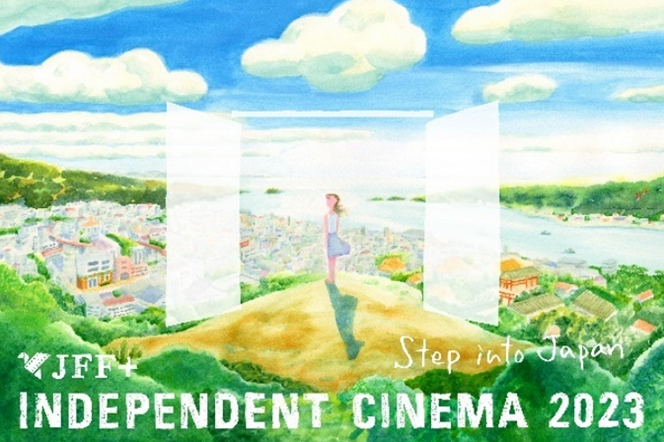 The main visual of JFF+ INDEPENDENT CINEMA 2023, created by illustrator Yamaguchi Yosuke
The main visual of JFF+ INDEPENDENT CINEMA 2023, created by illustrator Yamaguchi Yosuke
Related Articles
Keywords
Back Issues
- 2024.5.24 The 50th Japan Found…
- 2024.3. 4 Movie Theaters aroun…
- 2023.4.10 The 49th Japan Found…
- 2023.3.28 JF's Initiatives for…
- 2023.1.27 Living Together with…
- 2022.11.16 Inner Diversity <…
- 2022.6.21 The 48th Japan Found…
- 2022.3.22 JF's Initiatives for…
- 2022.3.14 JF's Initiatives for…
- 2022.2.14 JF's Initiatives for…


